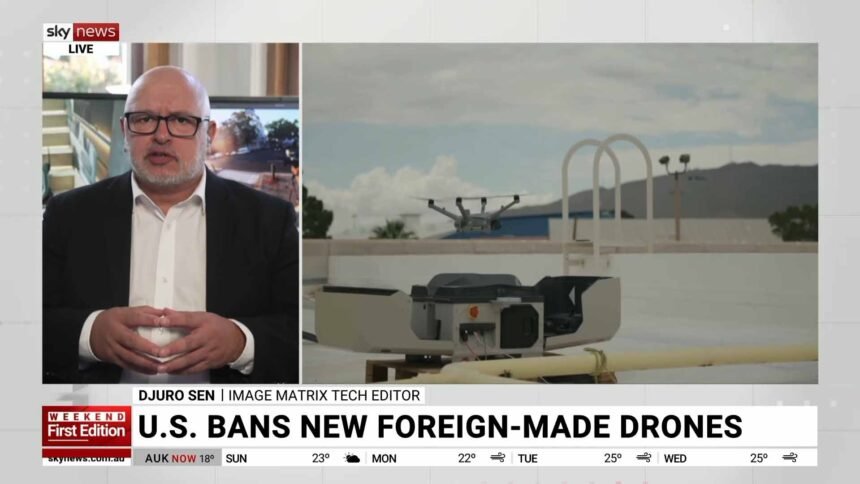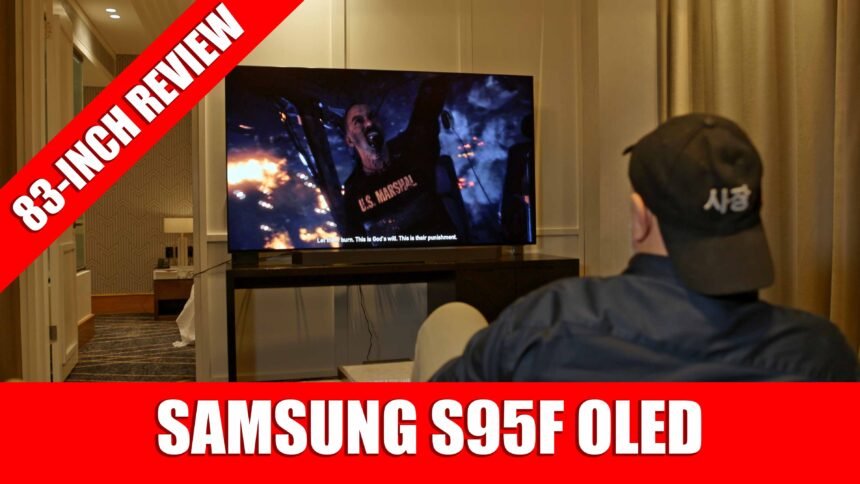Back in 2017 I was tasked with shooting a 360 video series that involved a lot of drone shots in national parks with Indigenous Rangers. There weren’t too many small, good quality options available unless you wanted to stitch together a stack of GoPros in post production.
I had to modify a Ehang drone with a underslung boom so I could attach a 4K Samsung 360 camera. This was enough resolution for the time as 360 video was relatively newish in the mass market. For years 360 cameras have been ‘tacked’ onto drones which were designed for forward-facing 2D cameras.
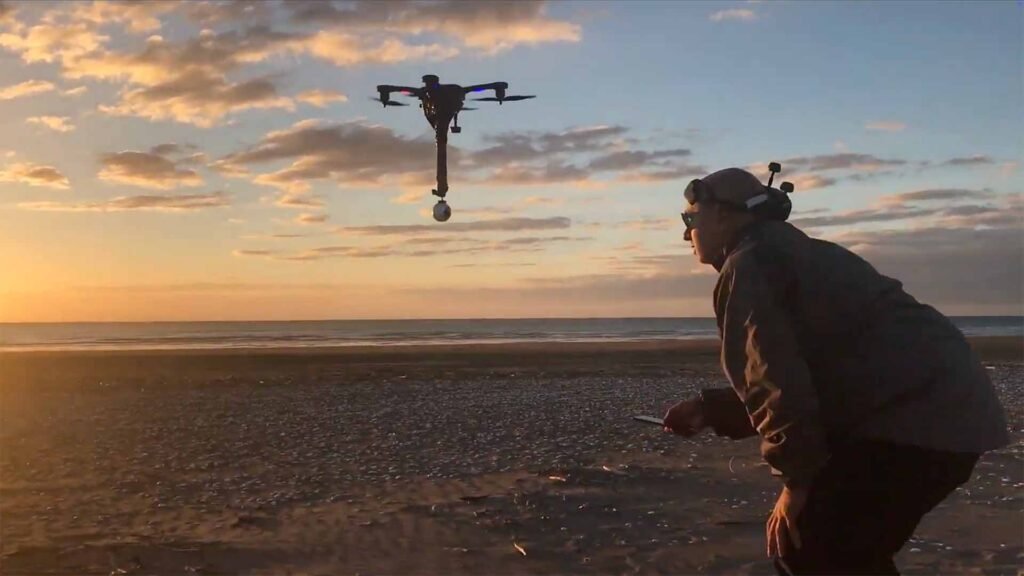
Not anymore, thanks to Insta360’s new drone project. Under the brand name Antigravity the world’s first 8K 360 camera drone was born. Called the A1, this drone is like nothing we’ve ever seen before. It’s designed for one thing, 360 content. I really wish I had this 8 years ago. It would have solved a lot of problems while improving the final outcome.
Why the A1 is Different
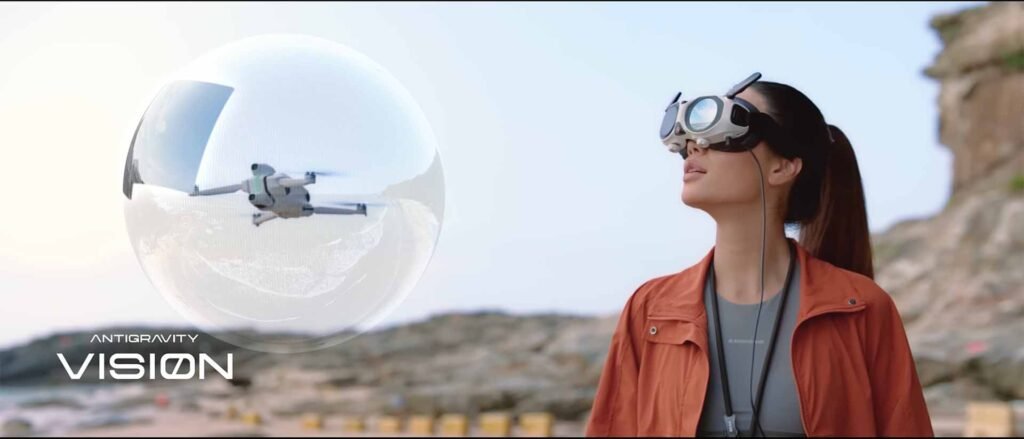
The Antigravity A1 has been built from the ground up to be an aerial 360 video camera. It’s the world’s first 8K 360 drone that’s designed to be lightweight (249 grams) and simple to use. A grip controller allows the pilot to fly the drone with one hand. It’s essentially a wireless joystick, that works neatly with the POV goggles. Another person can see the live stream via an external screen that’s uniquely located on the front of the goggles.
The A1 is doing what I’ve always wanted from a 360 drone, as I detailed above, and that’s why it’s different to any other drone you’ve seen before.
Invisible Drone
When I first started shooting 360 drone videos I had to do a lot of work in post to remove the drone above the camera. In the end, it just left it there for ranger project. The kids loved seeing the drone when they looked up. But with the A1, the camera lenses are perfectly positioned at the top and bottom of the drone. A 360 image-stitching algorithm powered by Insta360 then renders the drone fully invisible. This is huge.
8K Resolution
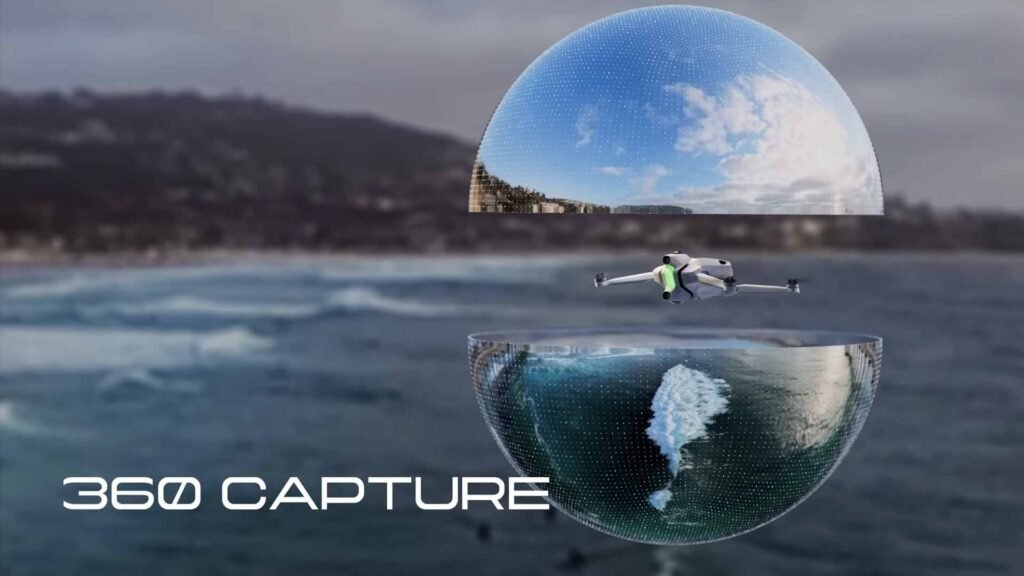
360 video always looks better with higher resolution because the cameras are capturing the entire sphere around the drone. That’s a lot of area to cover. A normal 2D camera is capturing a far smaller frame, even at its widest. So it makes sense that you have as many pixels as possible to edit with in post.
Stabilisation is Key
The video samples from Insta360 look incredible. It’s not only the resolution, it’s the stability. When stitching and editing older 360 videos it often involved a lot intensive tracking and rendering. But with the Antigravity A1 we have a clearer, smoother shot right out of camera.
Shot Options
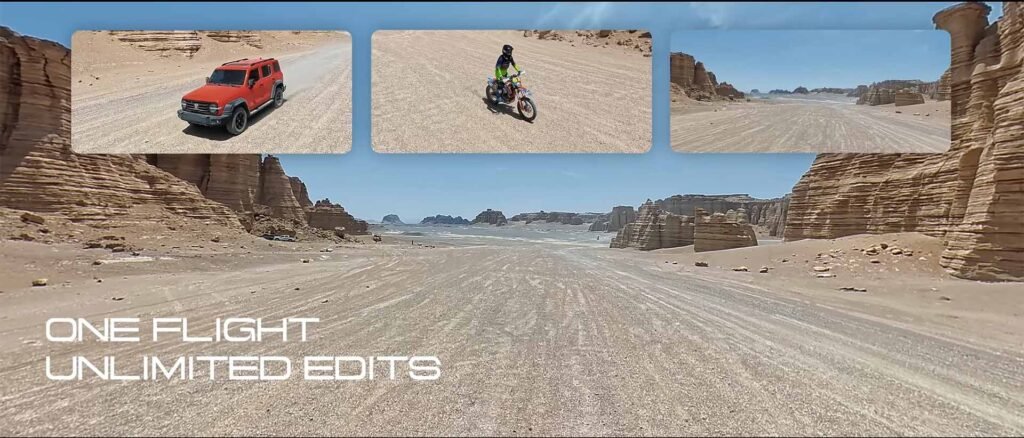
The shot options are almost endless with a drone like the A1 if you’re producing a 2D export. Choose a wide opening shot, whip pan 180 degrees to show where you came from then cut to a tight shot of your subject below. You can do all this with one ‘virtual’ camera in post. When shooting live, just turn your head.
The reframing options are also perfect for social media. Pick 16:9, 9:16 or 1:1, it doesn’t matter, you can export to the size and format you need. This is where the experience of Insta360 in this space counts. Using an app to position and edit shots feels natural on a phone.
New Way to Fly
Antigravity calls the grip controller ‘your magic wand’. Point it skyward and the drone ascends like a rocket, swing it sideways to weave through valleys – it’s all about ‘feeling’ the flight. Now, with POV drones you are looking ahead or down, but always in the direction of travel. With a 360 drone you can look anywhere while still travelling forward. It’s a bit like being a really tiny pilot sitting on the drone.
The grip controller is an excellent idea for newbies but more experienced drone pilots are already asking for a traditional controller. Many test pilots have reported that this drone gives the best situational awareness of any POV drone they’ve flown.
Safety
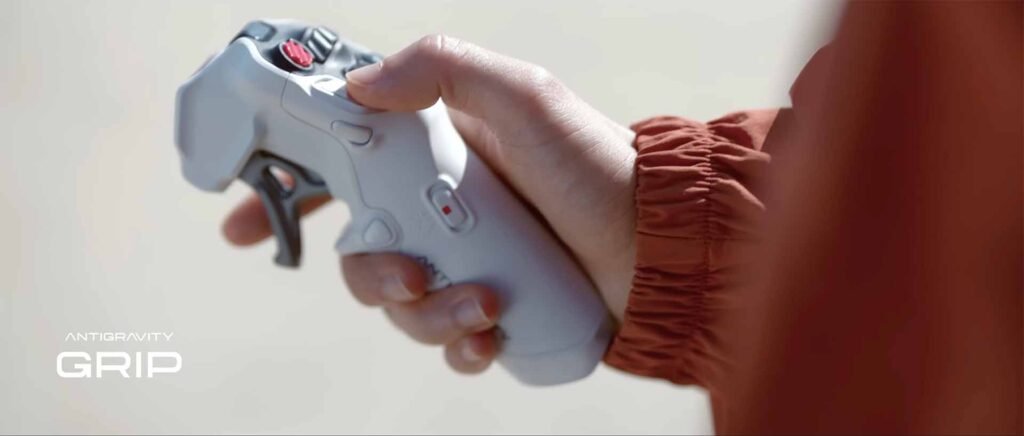
The Antigravity A1 might weigh less than 250 grams but it still needs to be handled safely. The Grip controller directs the drone, ensuring it always flies forward. This allows the forward vision system to handle all obstacles. You also get smart features like return-to-home.
Antigravity A1 automatically extends the landing gear as soon as you power on the drone and retracts after takeoff. A payload detection system flags excess weight to prevent misuse and keeps it under 250 grams.
Pricing and Availability

Antigravity A1 will be available in major markets starting January 2026. The exact release date will be announced closer to launch.
But there is a way to get your hands on a drone before next year. Antigravity has created an exclusive early-access co-creation project that anyone can join.
This won’t replace traditional drones but it’s added a whole new category for millions of drone users around the world.



